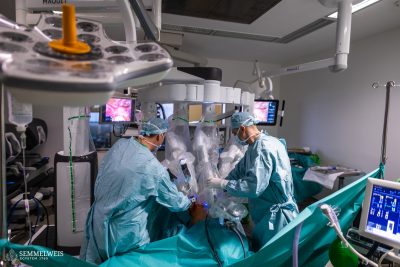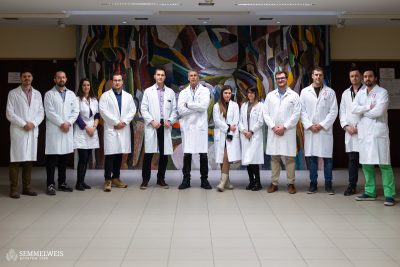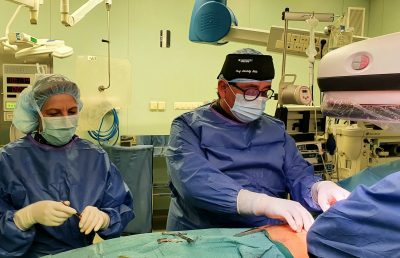According to some estimation almost a 100 000 hospital infections occur in Hungary every year. The so-called nosocomial infections, in other words those that are transmitted in hospital environments can be lethal for patients with weakened immune systems.
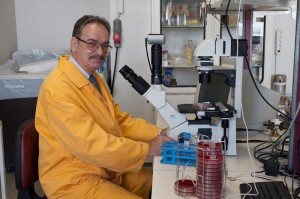 The researchers of Semmelweis University’s Institute of Medical Microbiology in cooperation with the National Centre for Epidemiology have developed a new method which can predict the occurrence and the spreading of larger hospital epidemics. Dr. Károly Nagy, the director of the Institute of Medical Microbiology told us that so far they have tested three main strains of bacteria in laboratory environment. They used a miniature model to analyse these strains in order to demonstrate how they react to fluoroquinolone which is the most common anti-infection agent used in hospitals.
The researchers of Semmelweis University’s Institute of Medical Microbiology in cooperation with the National Centre for Epidemiology have developed a new method which can predict the occurrence and the spreading of larger hospital epidemics. Dr. Károly Nagy, the director of the Institute of Medical Microbiology told us that so far they have tested three main strains of bacteria in laboratory environment. They used a miniature model to analyse these strains in order to demonstrate how they react to fluoroquinolone which is the most common anti-infection agent used in hospitals.
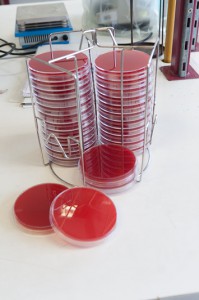 First, they examined the methicillin resistant Staphylococcus Aureus (MRSA) which is considered today one of the most relevant bacterial infections in clinical medicine. The National Centre for Epidemiology provided the strains which were isolated from patients infected with MRSA. The director explained the process as such: “we put antibiotics in the culture medium upon which we inject the bacteria. Then it starts to multiply through such biochemical mechanisms which allow it to adapt to the given antibiotic level. Following this process we begin to continuously increase the antibiotic concentration.” In order for the bacteria to survive in the changing environment, they have to modify their genetic build-up, i.e. they have to mutate which in turn greatly burdens their multiplicative abilities. Consequently this kind of bacteria will not be able to reproduce rapidly resulting in a reduced rate of occurrence. 10-12 large types (clones) of MRSA behave in this fashion. However, there are several clones whose reproductive rates are only minimally affected thanks to a fluoroquinolone resistance. These strains can spread easily and can force out other clones, therefore higher occurrence rate may be expected.
First, they examined the methicillin resistant Staphylococcus Aureus (MRSA) which is considered today one of the most relevant bacterial infections in clinical medicine. The National Centre for Epidemiology provided the strains which were isolated from patients infected with MRSA. The director explained the process as such: “we put antibiotics in the culture medium upon which we inject the bacteria. Then it starts to multiply through such biochemical mechanisms which allow it to adapt to the given antibiotic level. Following this process we begin to continuously increase the antibiotic concentration.” In order for the bacteria to survive in the changing environment, they have to modify their genetic build-up, i.e. they have to mutate which in turn greatly burdens their multiplicative abilities. Consequently this kind of bacteria will not be able to reproduce rapidly resulting in a reduced rate of occurrence. 10-12 large types (clones) of MRSA behave in this fashion. However, there are several clones whose reproductive rates are only minimally affected thanks to a fluoroquinolone resistance. These strains can spread easily and can force out other clones, therefore higher occurrence rate may be expected.
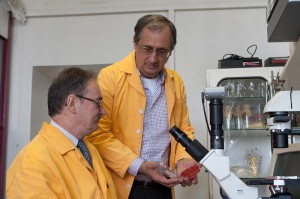 “With the help of the early warning system developed through the experiments we can tell if the bacteria isolated from the patients are a subtype of a clone which targets a specific geographical area and population group or a type that would be unable to spread significantly with the current counter-measures in place” – emphasised Dr. Károly Nagy. He also added that the method is useful in predicting how dangerous and how aggressive the epidemic could be.
“With the help of the early warning system developed through the experiments we can tell if the bacteria isolated from the patients are a subtype of a clone which targets a specific geographical area and population group or a type that would be unable to spread significantly with the current counter-measures in place” – emphasised Dr. Károly Nagy. He also added that the method is useful in predicting how dangerous and how aggressive the epidemic could be.
Among the different MRSA clones the so-called New York/Japan and South-German epidemic strains are currently present in Hungary. These forced out the Hungarian clone in the early 2000s which only produced a low-number of incidences. As a consequence, the number of cases started to rise with the appearance of the international MRSA clones. Therefore – beyond ensuring the basic rules of hygiene and pharmaceutical usage – it appears to be important which type of clone is dominant at a certain geographical location.
Apart from MRSA, two other types of bacterial infections were examined at the Institute of Medical Microbiology. The results in the cases of the Klebsiella strains and an anaerob bacterial strain both showed strong similarities with the MRSA examinations.
Pálma Dobozi
Translated by: Bonifac Makkai
